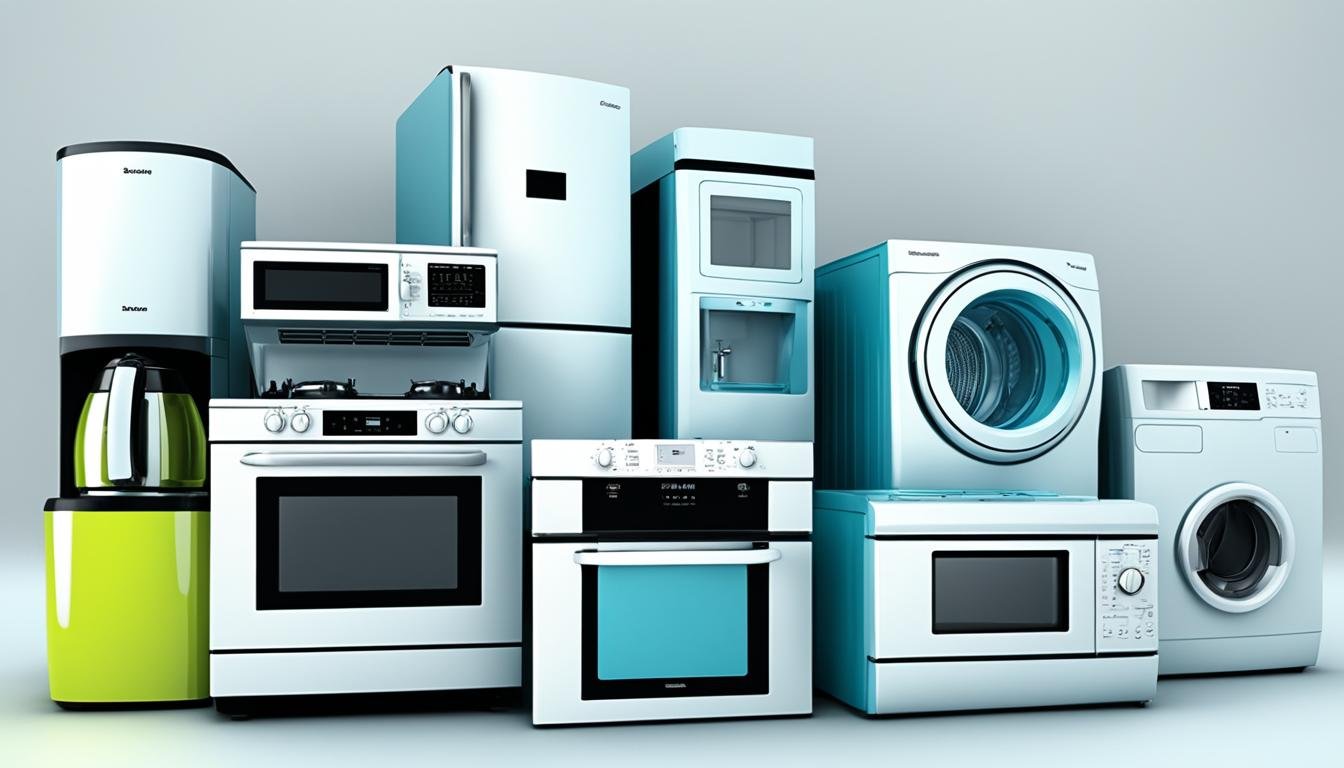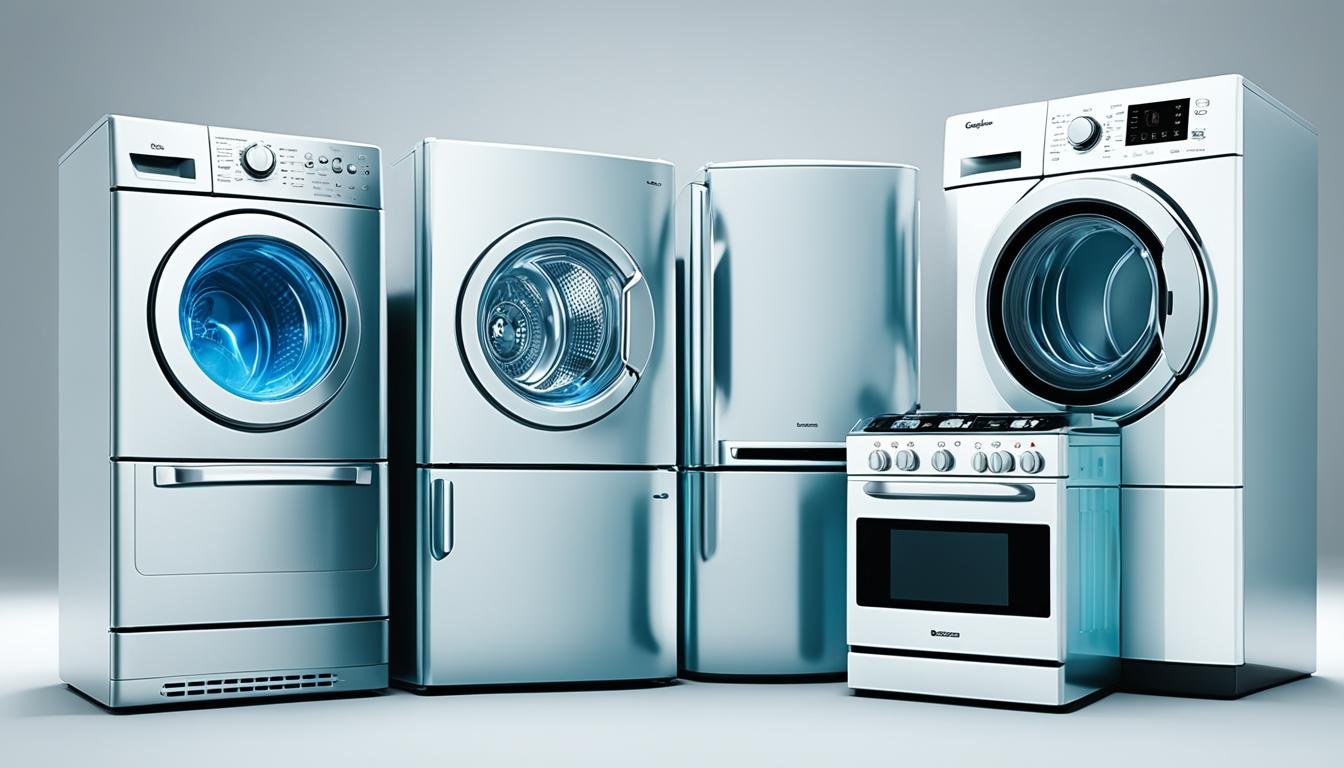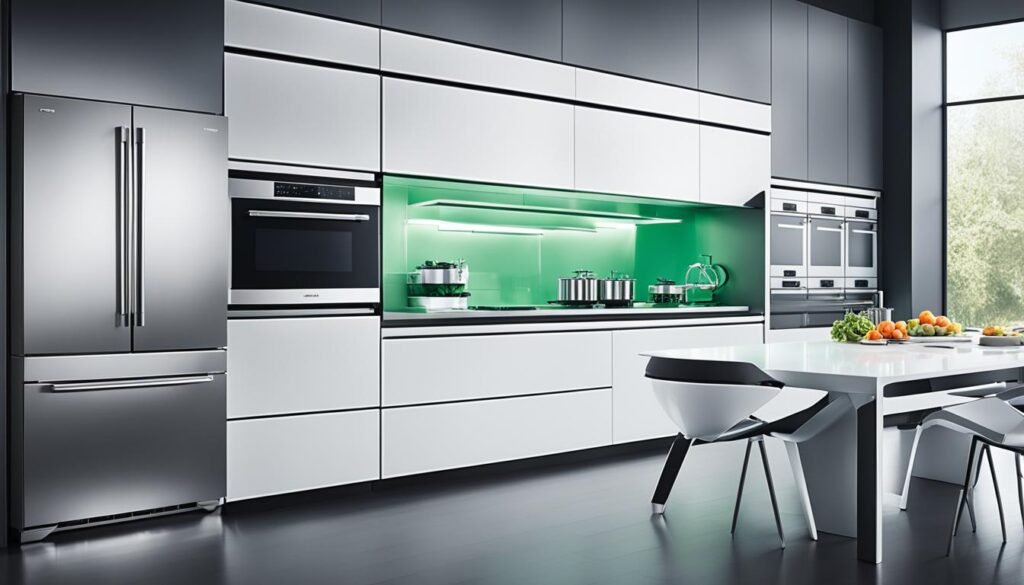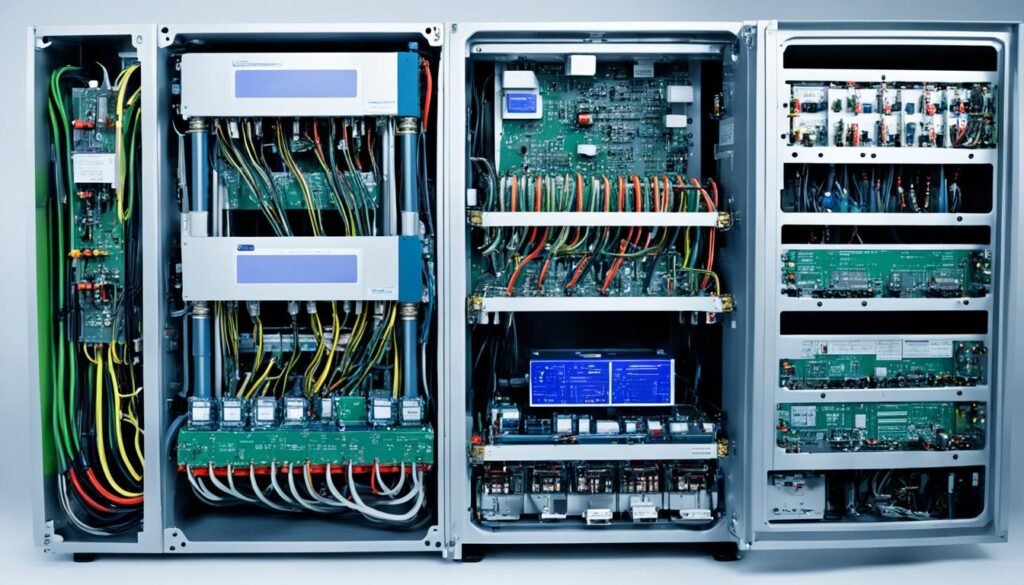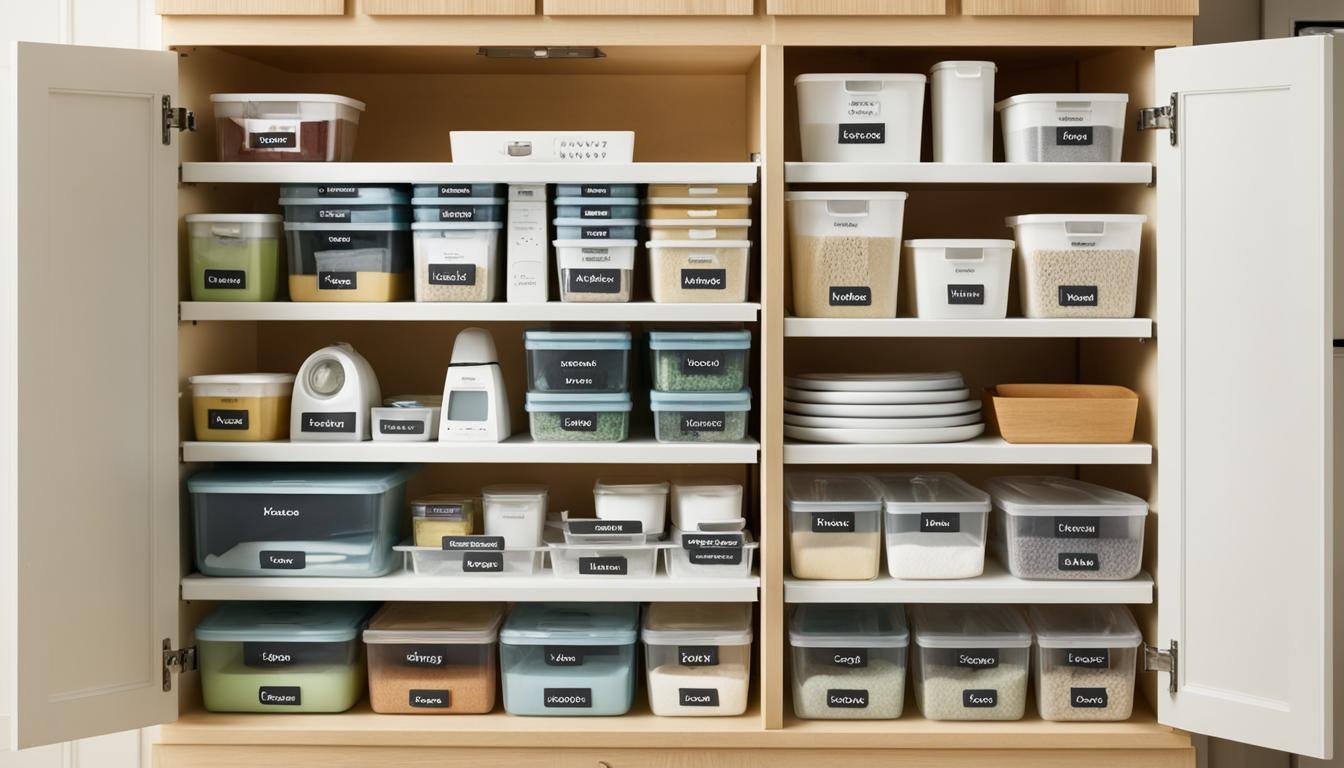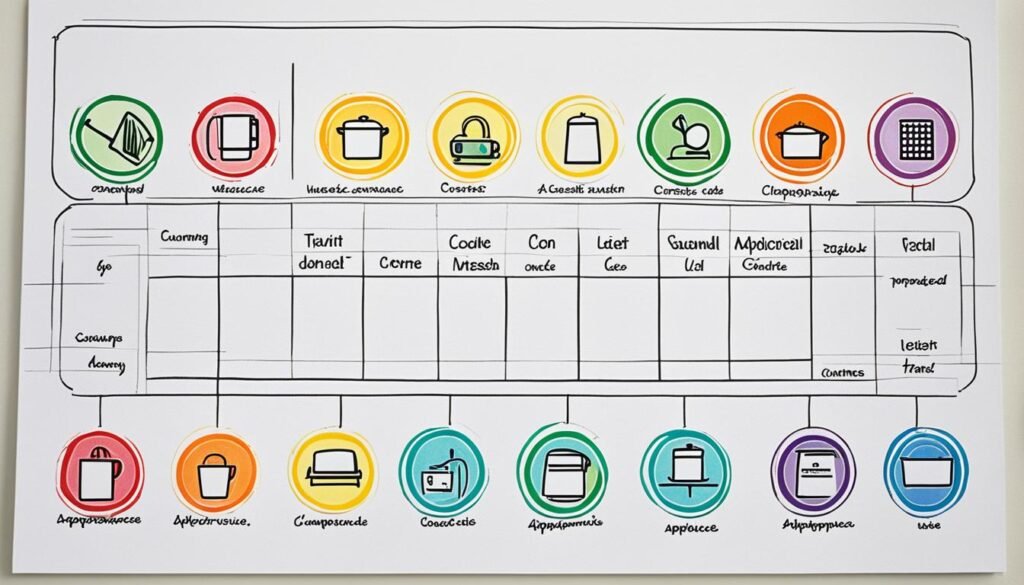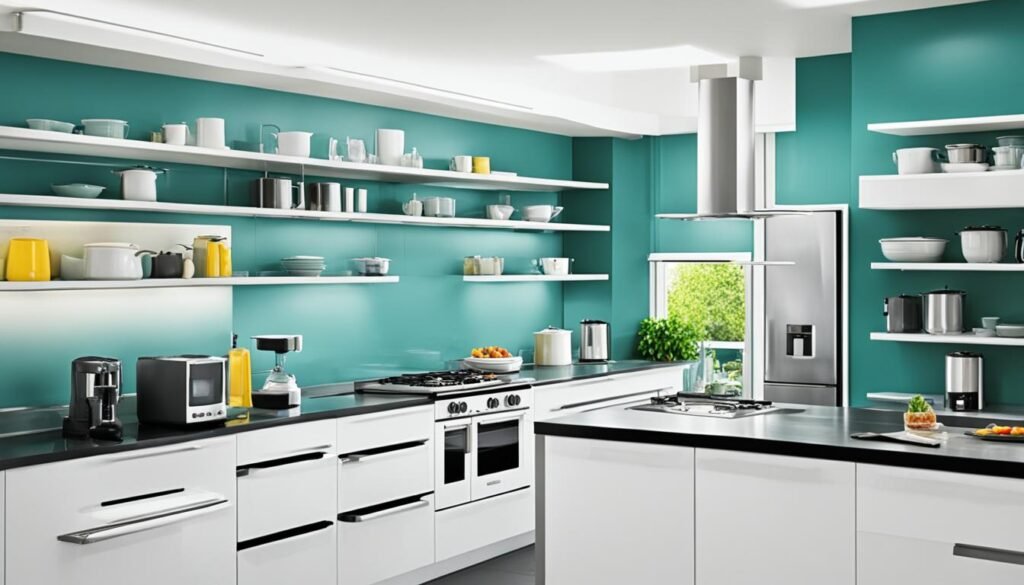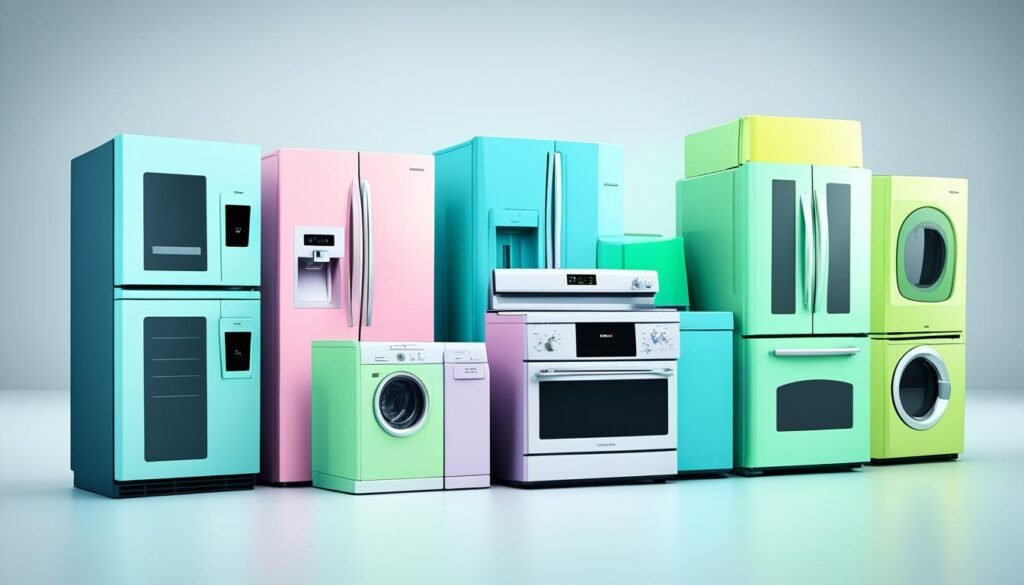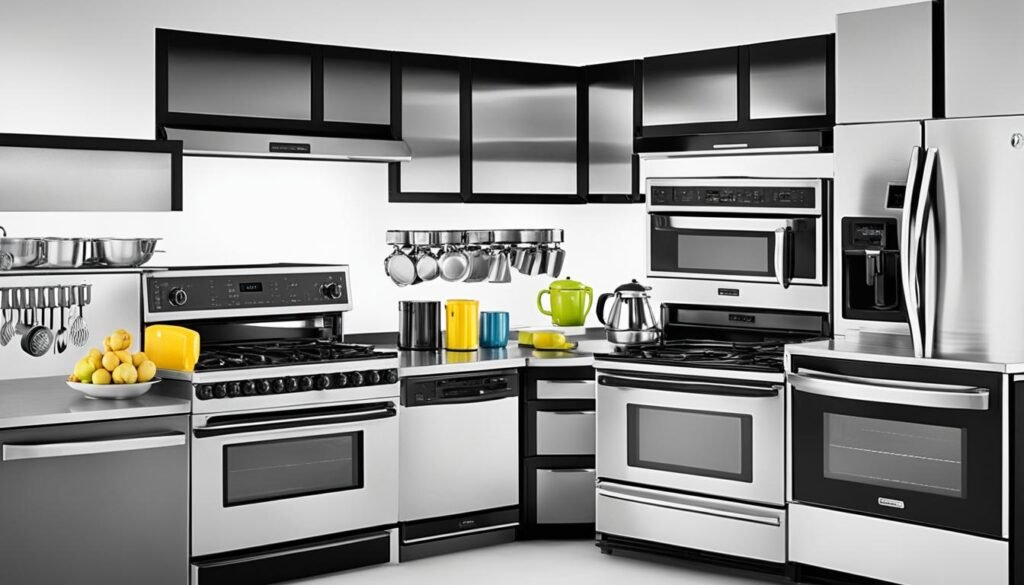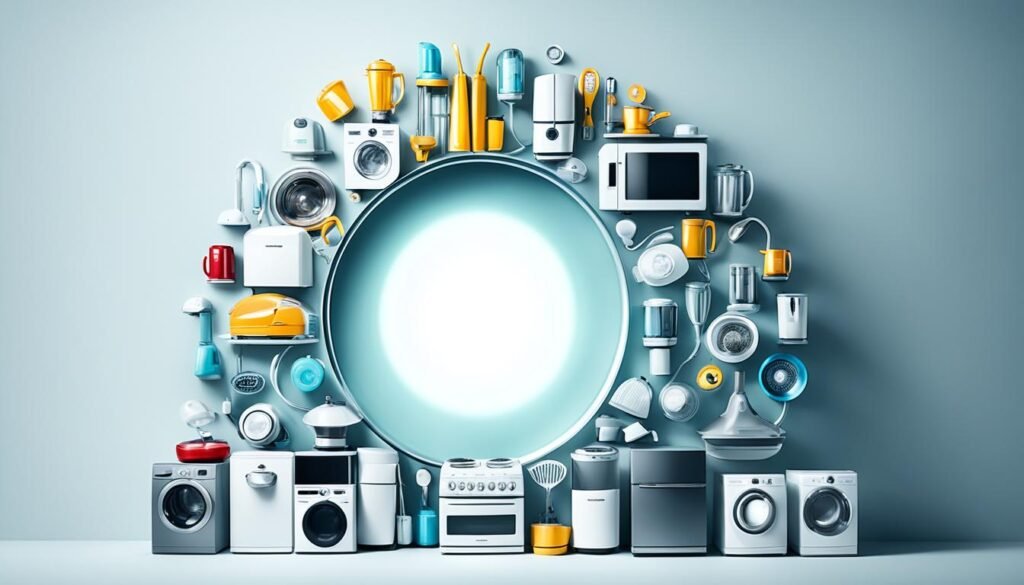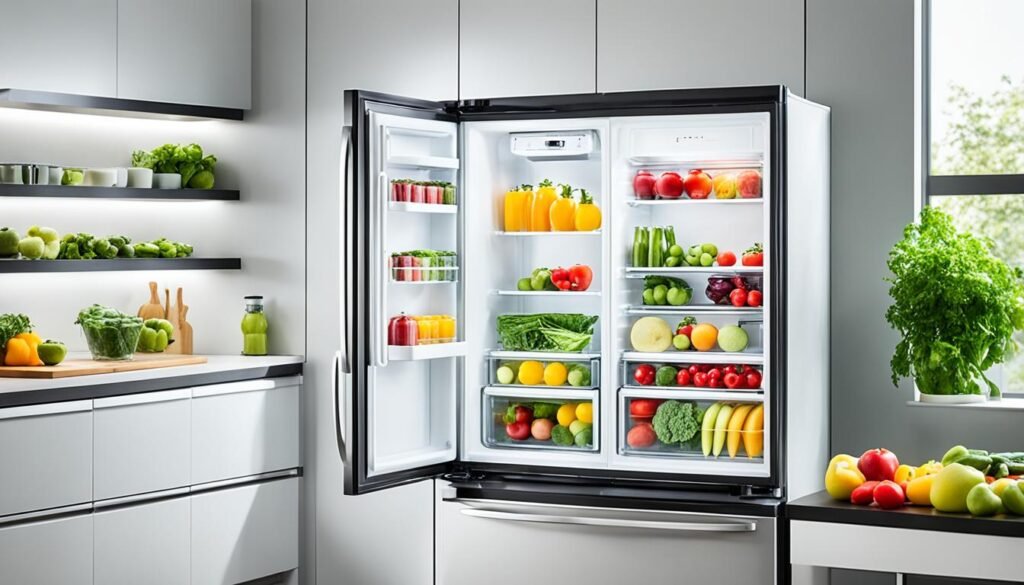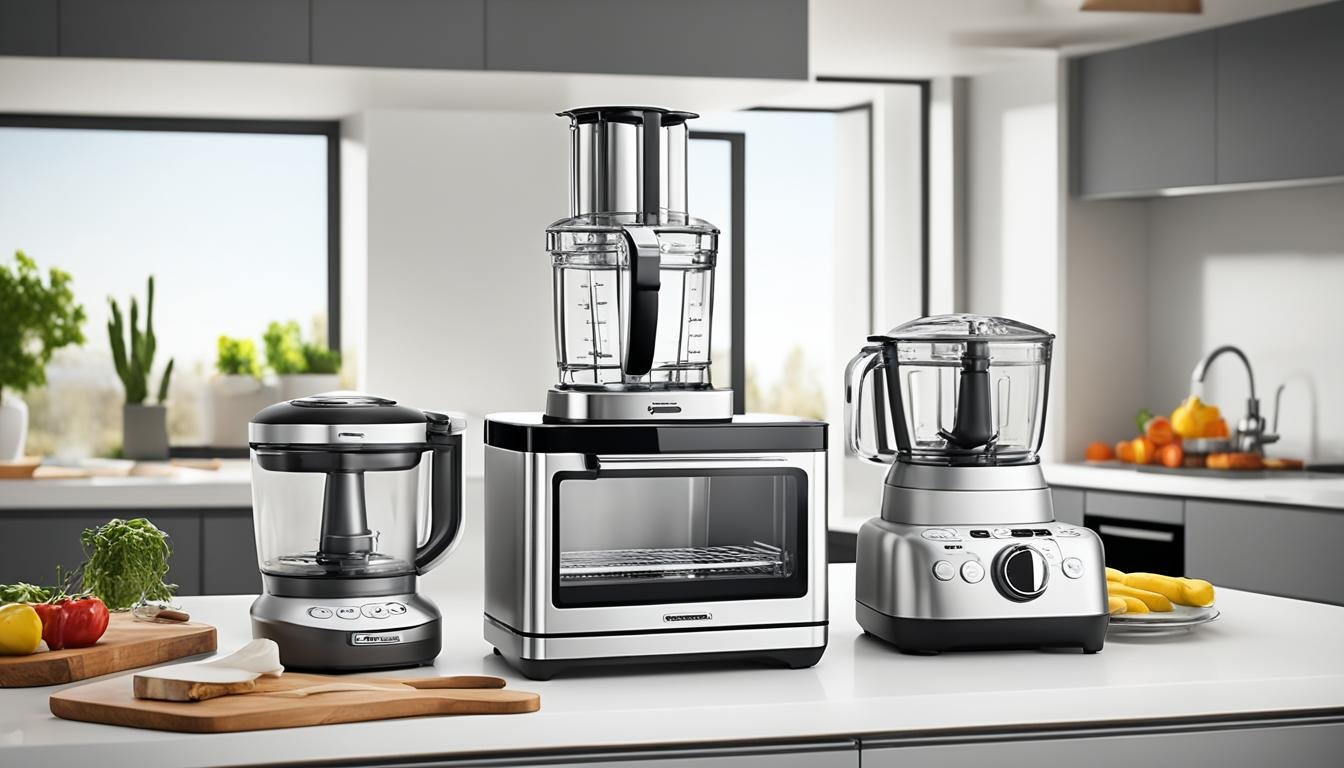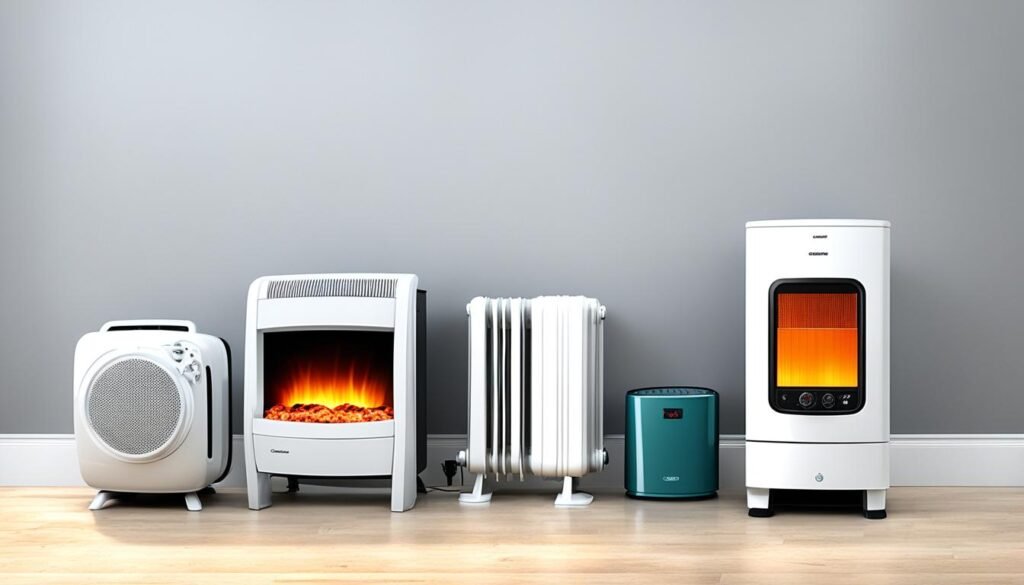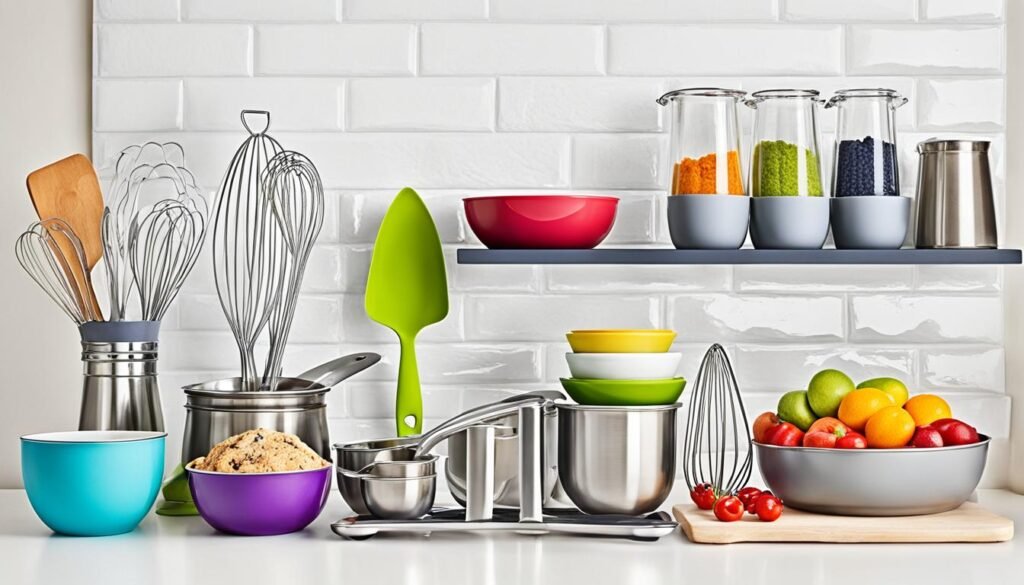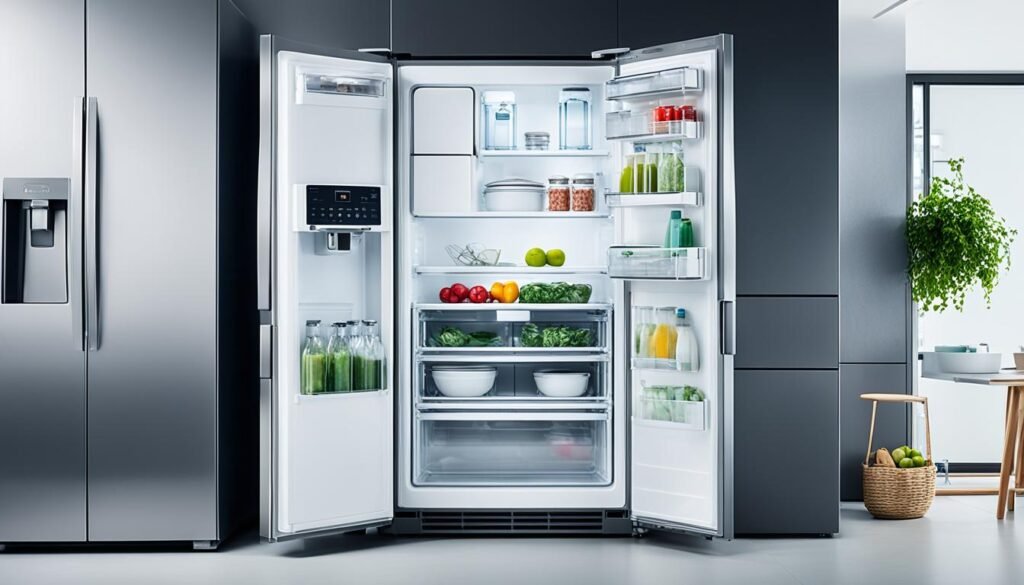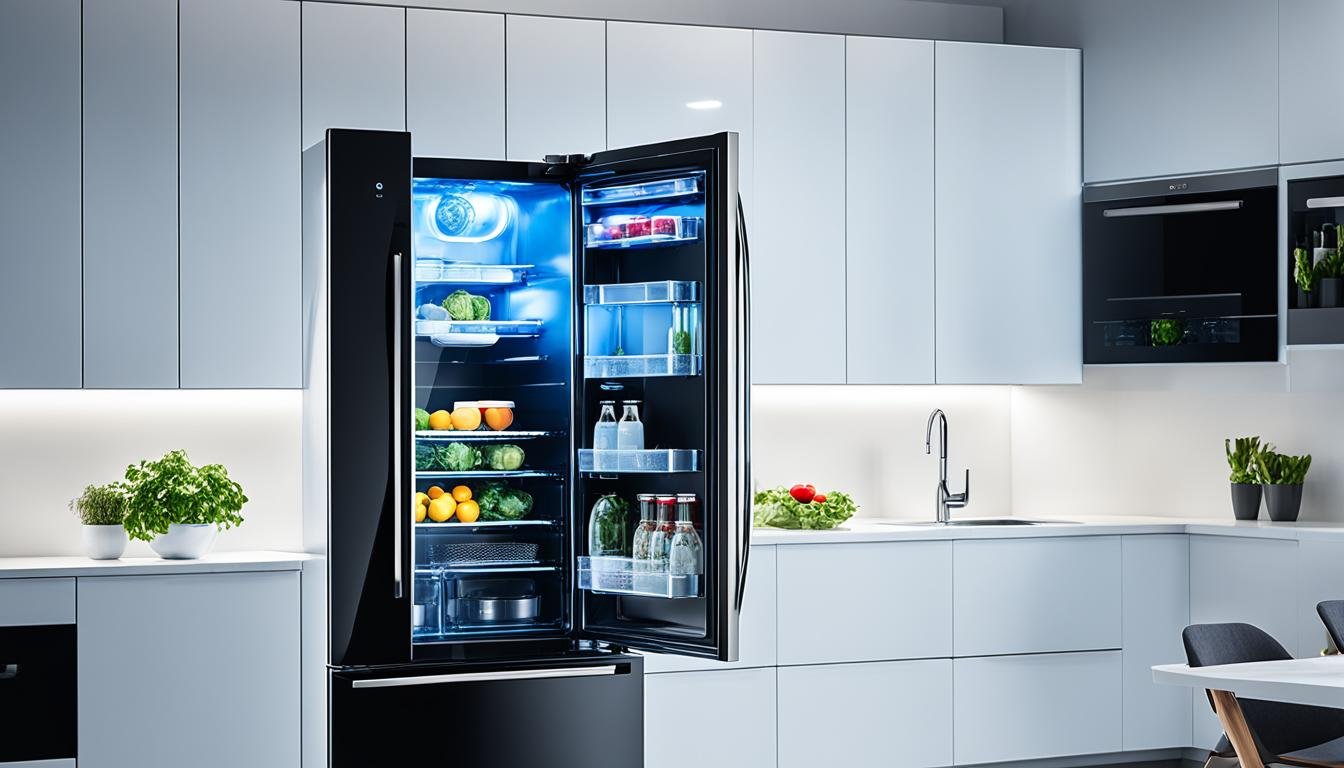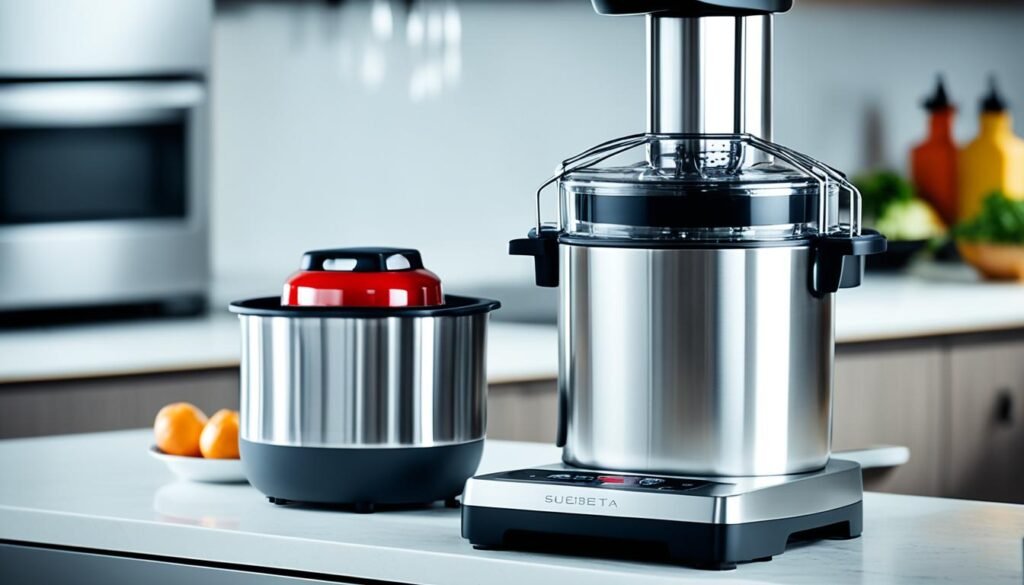Keeping people and animals safe from electric shocks is super important. The International Electrotechnical Commission (IEC) has set rules for putting electrical devices into groups based on safety, IEC 61140. This lets groups that know about technology safety make their own rules. All electrical stuff must pass a test called portable appliance testing (PAT) before it’s sold to check they meet the right safety standards.
Key Takeaways
- IEC 61140 gives a system for sorting electrical devices into safety groups.
- Getting the right safety class is key to avoiding electric danger and needing specific tests.
- Main safety classes are Class I, Class II, and Class III. Each has its own safety rules.
- Look for certain signs and labels on machines to know what safety class they belong to.
- Always following the rules is a must to prevent electric accidents and legal trouble.
Introduction to Appliance Classes
It’s vital to choose the right appliance class for electric safety. The IEC 61140 sets these classes, making sure each appliance meets its own safety needs. For both makers and users, knowing and using these classes protects against electrical dangers.
Importance of Identifying Appliance Classes
Knowing appliance classes tells us the safety each device needs. This helps put the right safety steps in place. It keeps appliances safe to use and follows safety rules.
Overview of Appliance Classes
The IEC 61140 standard talks about five important appliance classes. Each class has its unique safety features and demands:
- Class I Appliances – They need an Earth connection through an earth conductor for safety.
- Class II Appliances – These are Double Insulated and don’t need an Earth connection.
- Class III Appliances – They work with a safety isolating transformer and don’t use Earth.
- Class 0 and 01 Appliances – These lower safety standard classes are no longer common.
| Appliance Class | Key Characteristics | Examples |
|---|---|---|
| Class I | Require Earth connection for protection | Refrigerators, washing machines, power tools |
| Class II | Double Insulated, no Earth connection required | Laptops, shavers, some kitchen appliances |
| Class III | Designed for safety isolating transformer, no Earth | Low-voltage devices, LED lights, USB chargers |
It’s crucial to know the difference between these classes. This knowledge is key for safe and correct use of electrical devices. It also helps follow safety rules and regulations.
“Identifying the correct appliance class is crucial for ensuring electrical safety and compliance with regulations.”

Class I Appliances
Class I appliances are very important when we talk about appliance classes. They are mostly metal and have three cables. These include a metal Earth pin and a fuse in the plug. These appliances stand out because they have two layers of protection: basic insulation and an Earth connection.
Definition and Characteristics
In a Class I appliance, the Live, Neutral, and Earth wires do a special job. If there’s a problem with the circuit, they guide the current safely to the ground. This prevents the user from getting an electric shock. Such a design makes these appliances safer than those without this Earth connection.
Examples of Class I Appliances
Refrigerators, microwaves, kettles, irons, and toasters are all Class I appliances. They are key for our daily life and use Class I safety to run safely and well.
| Appliance Class | Safety Features | Examples |
|---|---|---|
| Class I |
|
|
It’s key to know about Class I appliances to correctly Identify Appliance Classes. This knowledge is important for electrical safety at home and work. In the next parts, we’ll look at other types of appliances in detail.
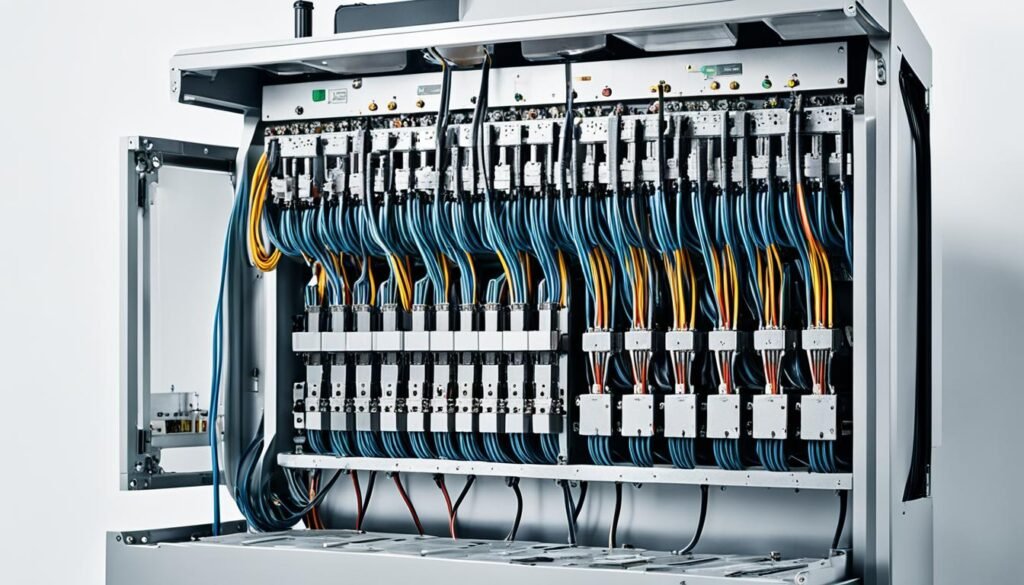
“Proper identification and classification of appliances are critical for maintaining electrical safety and adhering to relevant regulations.”
Class II Appliances
Knowing the difference between Class I and Class II devices is key. Class II appliances have an added layer of safety. This is to protect users from getting shocked, known as “double insulated.”
Class I appliances must be grounded. But, Class II devices work without a connection to the earth. They have two insulating layers. The first is usually a plastic connector. The outside is a plastic case that covers the whole device.
Hair dryers, DVD players, televisions, computers, and copy machines are Class II devices. They are used where having an earth connection is hard. This makes them safer for many uses.
It’s vital to know Class II appliances for electrical safety. Knowing their special needs helps avoid accidents. Always take the right steps when using or fixing these appliances.
| Appliance Class | Insulation Requirements | Earth Connection Needed | Examples |
|---|---|---|---|
| Class I | Basic insulation | Yes | Freezers, Irons, Photocopiers, Microwaves |
| Class II | Double or reinforced insulation | No | Hair Dryers, DVD Players, Televisions, Computers, Photocopiers |
| Class III | Supplied by a safety extra-low voltage (SELV) power source | No | Laptops, Phone Chargers, Cameras |
Understanding what makes Class II appliances unique is crucial. It leads to safer electrical setups. This is good for people and the planet. Always focus on electrical safety with any device.
Identifying Appliance Classes
It’s important to know an electrical appliance’s class for safe use and testing. Usually, you can find the class symbol on the appliance. But, sometimes it’s not clear. Then, you need to carefully check and test the appliance to know its class.
Symbols and Markings
Class I devices have a square with a “I” inside to show they need an earth connection. They are made with a metal case. Class II devices use a symbol of a square inside another square. They are double-insulated and don’t need an earth connection.
If an appliance lacks a clear symbol, consider it a Class I by default. Knowing the appliance’s class is key for correct testing (PAT).
Inspection and Testing Procedures
- Class I appliances are checked for their earth connection and how well they insulate.
- Class II appliances focus on their insulation. They should keep all electricity inside.
- IT equipment, like computers and routers, have their cords checked in PAT tests.
- Kitchen appliances, such as microwaves, undergo tests to prevent electrical risks.
The frequency and depth of PAT tests change with the appliance and its setting. Knowing how to classify and test appliances promotes workplace safety. This cuts down on accidents and keeps in line with electrical safety laws.
“Accurate identification of appliance classes is essential for conducting the appropriate portable appliance testing (PAT) procedures and ensuring electrical safety in the workplace.”
Importance of Proper Appliance Classification
It’s key to identify electrical appliances correctly for user safety. This helps prevent dangerous electric shock hazards. The right classification ensures safety steps, like enough insulation and earth connections, are taken. These steps come from the IEC 61140 standard.
Following proper appliance classification also means meeting safety laws. This helps manufacturers and users follow safety guidelines. It avoids possible legal and money troubles.
Electrical Safety Considerations
The safety levels of Class I, Class II, and Class III appliances are important to note. Each class has specific protection and safety needs. Class I items need basic insulation and grounding. This group includes things like fridges, kettles, and toasters.
Then we have Class II items, like hair dryers and computers. They have extra insulation, so they don’t need grounding. Finally, Class III, which are items like laptops and cell phones. These don’t need grounding thanks to an isolation transformer. It stops electric shock by cutting off the current during a fault.
Regulatory Compliance
Proper appliance classification is not just about safety; it’s the law. Manufacturers and users must meet the safety standards from groups like the IEC. Not doing so can lead to big fines, recalls, and legal issues.
By getting appliance classification right, businesses and individuals show they care about preventing electrical dangers. Plus, they stay on the right side of the law. This approach supports a safe electrical environment for all.
“Accurate identification and classification of electrical appliances is essential for maintaining the highest standards of safety and compliance.”
To wrap up, getting appliances categorized correctly is vital for safety and obeying the law. This helps cut the risk of electric shocks, protect people, and dodge legal problems. Knowing how to classify appliances makes the electrical world safer and better for everyone.
Portable Appliance Testing (PAT)
Portable Appliance Testing (PAT) checks if electrical devices are safe. It looks at each device’s safety based on its class. This helps keep all gadgets safe. Businesses and people need to know the PAT rules for each kind of device.
PAT Requirements for Different Appliance Classes
Class I gadgets get Earth Continuity and Insulation Resistance tests. This makes sure the basic insulation and earth connection are good. Class II gadgets only take the Insulation Resistance test. They don’t need an earth connection to be safe.
Class III devices work at or under 50V. Most of these don’t need PAT tests. They are seen as already very safe. This includes certain medical tools and low-voltage lights. They don’t have the same risks as higher voltage items.
| Appliance Class | PAT Tests Required |
|---|---|
| Class I | Earth Continuity, Insulation Resistance |
| Class II | Insulation Resistance |
| Class III | No PAT test required |
It’s key for businesses and homeowners to check and care for their gadgets. Ignored electrical problems can cause shocks or fires. That’s why it’s critical to know about Identifying Appliance Classes and do the right PAT tests.
With portable testers, you can do many tests on electrical stuff. This includes Earth Bond/Continuity, Insulation, and Touch Current tests. It also does others like Leakage and Load tests. Checking your devices this way helps them last longer. It also keeps your work or home safe for everyone.
Class III Appliances
In the appliance world, Class III devices stand out for their top electrical safety. They use a special isolating transformer. This keeps the power and the appliance separate.
Definition and Characteristics
A Class III appliance’s isolating transformer has two coil windings. These windings, called the Primary Winding and Secondary Winding, never touch. Because of this, they don’t need an earth connection for safety. If there’s a circuit problem, the power is quickly shut off, stopping electric shocks.
These appliances work at under 50 volts, often at 24 or 12 volts. They are called extra-low voltage devices. They need a separate power supply, like a transformer. This makes them much safer because the lower voltage means no risk of harmful electric shocks.
Examples of Class III Appliances
- Laptops
- Mobile phones
- Low-energy light bulbs
- Some types of medical equipment
Class III devices have clear labels that show they’re Earth-free. Their safety depends a lot on the isolating transformer, which acts like double insulation. This gives extra protection.
Even though Class III appliances are very safe, they can still be dangerous. Things like overheating and fires are still risks. So, medical devices need more than Class III safety regulations to be safe.
| Appliance Class | Characteristics | Examples |
|---|---|---|
| Class III |
|
|
To keep user safety first with Class III appliances, experts in Identifying Appliance Classes should understand these devices well. Knowing their unique safety features helps with making safe choices.
Conclusion
It’s very important to know which class an appliance belongs to. This helps keep electrical systems safe and follow the rules. Understanding Class I, II, and III items means users and makers can prevent shocks. This is done by right testing like Portable Appliance Testing (PAT). This cuts down the chance of electric accidents, making things safer for everyone.
With new tech like Deep Learning, we can spot appliances better. Things like Convolutional Neural Networks help improve how we identify appliances. Using more data can make these tools even better, checking the appliance’s safety more accurately.
Figuring out what class each appliance is makes our world safer and saves energy. Places like //plumbersinhemetca.com/ and Dream Home Digest talk about this. Better technology and lots of work can lower the risk of electric problems. This leads to a safer world where buildings are eco-friendly.
FAQ
What are the different classes of electrical appliances?
Electrical appliances fall into different groups for safety reasons. The IEC, or International Electrotechnical Commission, sets these. There are three main classes: Class I, Class II, and Class III. Each class has its specific safety design and test rules.
What are the characteristics of Class I appliances?
Class I appliances often have a metal body. They need three cables, with one being a metal Earth pin. There’s a fuse in the plug too. These devices use both basic insulation and an earth connection. If a problem occurs, the current flows safely into the ground.
How are Class II appliances different from Class I?
Class II appliances are sometimes called “double insulated.” They provide two layers of insulation. This setup means they don’t depend on an earth connection for safety. The plastic around these devices is the primary insulator, with the plastic casing being the secondary layer.
How can I identify the class of an electrical appliance?
Look for a specific symbol on the appliance to figure out its class. Class I devices carry a symbol showing a square with a dot inside it. Class II devices have a symbol with a square inside another square. If you don’t see one of these symbols, consider the appliance as Class I for safety reasons.
What is Portable Appliance Testing (PAT), and how does it relate to appliance classes?
PAT, or Portable Appliance Testing, checks electrical item safety. The tests it involves vary based on the appliance’s class. For instance, Class I gadgets receive Earth Continuity and Insulation Resistance tests. Class II items, however, only get the Insulation Resistance test.
What are the characteristics of Class III appliances?
Class III appliances are unique in their design. They use an isolating transformer with two winding coils. This setup removes the need for an earth connection. It stops electric current if there’s a fault, which keeps users safe. Laptops, phones, and some types of light bulbs are examples of Class III devices.
Source Links
- https://www.inspec-bv.com/what-are-the-different-class-types-for-appliances-class-i-appliances-class-ii-appliances-class-iii-appliances
- https://www.pat-testing-course.com/blog/faqs/electrical-appliance-classes/
- https://www.pat-testing-training.net/articles/class-I-vs-class-II-electrical-equipment.php
- https://www.vitecpower.com/wp-content/uploads/2012/05/Excelsys_ApplicationNoteAN1102-ClassIvsClassII.pdf
- https://www.linkedin.com/pulse/electrical-appliance-classes-tarek-ali-pmp-rcm-cmms-
- https://www.pennfoster.edu/programs/trades/appliance-repair-career-diploma/curriculum
- https://www.skillstg.co.uk/blog/pat-testing-procedures/
- https://www.linkedin.com/pulse/portable-appliance-testing-pat-complete-guide-raptor-supplies-bwtgf
- https://www.morvantrading.co.uk/technical-earthing-electrical-appliance-classes/
- https://en.wikipedia.org/wiki/Appliance_classes
- https://www.intersafe.co.uk/pat-testing-what-are-class-1-2-and-3-appliances/
- https://www.xppower.com/resources/blog/iec-protection-classes-for-power-supplies
- https://medium.com/@gilljensen14/types-of-appliances-tested-during-a-pat-test-efca8113fda1
- https://www.raptorsupplies.com/blog/portable-appliance-testing-pat-complete-guide/
- https://www.cui.com/blog/iec-60335-1-explained-safety-standards-for-household-appliances
- https://www.linkedin.com/pulse/classification-types-class-i-electrical-appliances-ii-hamerson-hao-cvm5c
- https://www.mdpi.com/1996-1073/8/9/10522
- https://structuretech.com/gas-appliance-categories/
- https://www.instrumart.com/assets/Megger-Portable-Appliance-Testing-Guide.pdf
- https://www.cardinalfire.net/pat-test-classes/
- https://www.robinsonsfs.com/news/pat-testing-classes-explained/
- https://www.sciencedirect.com/science/article/abs/pii/S221067071830489X
- https://www.sciencedirect.com/topics/engineering/appliance-energy
- https://www.zgsm-china.com/blog/class-i-vs-class-ii-vs-class-iii-or-class-1-vs-class-2.html

